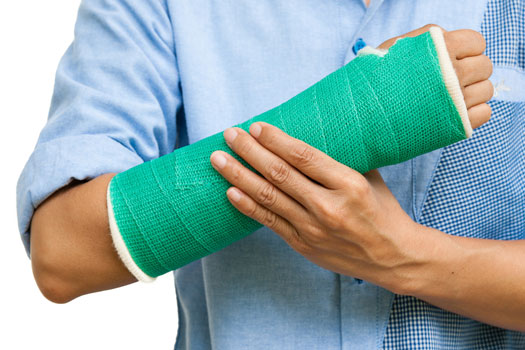To Cast or to Splint? That is the Question.
The inaugural feature for the NAHT blog is a discussion on the use of casting material as an alternative to thermoplastic material to immobilise joints.
This topic has been discussed recently with several of my colleagues and is also often discussed with treating surgeons, who all have their preferences not only for which joint(s) to immobilise but also whether to opt for a potentially removable thermoplastic splint or for a more restrictive casting material (typically polyester material).
Often the decision can be made based on the recency of the injury as a thermoplastic splint is more forgiving and accomodating when further swelling is anticipated. If this is not a consideration then other factors are considered such as the likley adherence of the patient to maintaining a splint on (knowing it can be removed), their expected usage of the upper limb (a cast will be more robust and stronger for heavier work) and the clinical requirement for intermittent motion during the healing phase (when a thermoplastic splint would be considered more appropriate). Of course, most casts are also unable to be removed to wash (although more recent products have entered the market which are “waterproof” and enable people to wash normally with their casts as the material is synthetic and breathable). All these need to be considered and weighed up along with the actual preference of the patient.
Other advantages of casting material is that it is less expensive when compared to thermoplastic, it is circumferentially applied and so is able to achieve good restriction and joint immobilisation and (in most cases) is a guaranteed way to ensure it is not removed during any crucial immobilisation periods. This is particularly important in the case of scaphoid fractures which have a higher non-union rate (compared to other upper limb fractures) and which, naturally is worsened when a patient is non-adherent and removes the cast or splint during their healing period.
Worthy of mention also is a unique product that has been used by NAHT for the purpose of serially (progressively) casting tight and contracted fingers back out straight (which can occur for a range of reasons). This product, known as Kobra Cast (previously Rhenatherm), is a thermoplastic impregnated bandage that provides good ability for 3 point support of fingers (which is a very handy way to get good rigid support) and in my opinion is a great product that can achieve much better results for straightening out those stubborn contractures than traditional thermoplastic versions of the same thing.
Overall, different reasons to use either a cast or splint, and in a number of cases either option could be succesfully used. Chat to your therapist if you have a specific preference and your problem can be managed by either a cast or splint. We love using both types of materials equally!


Social